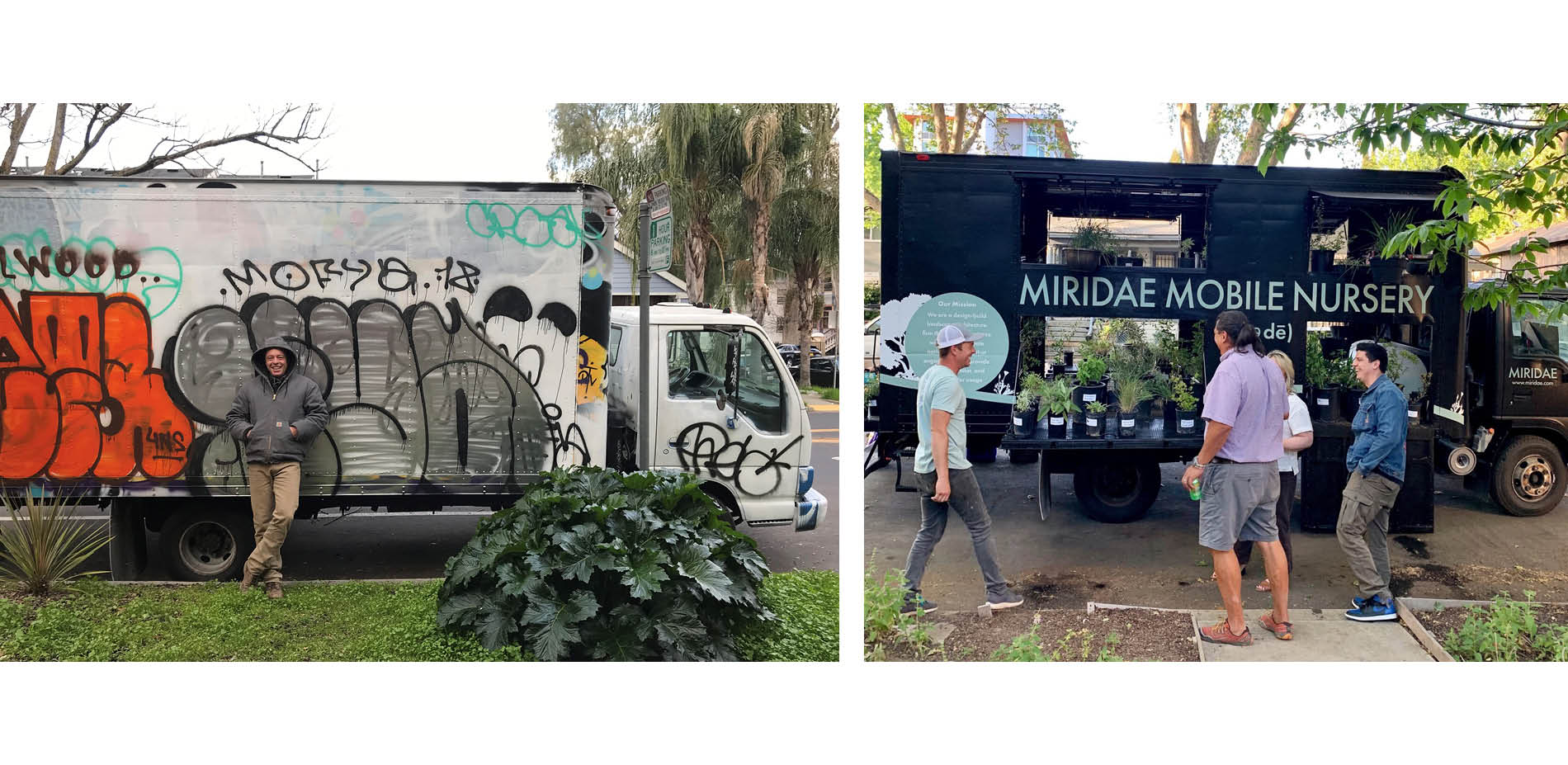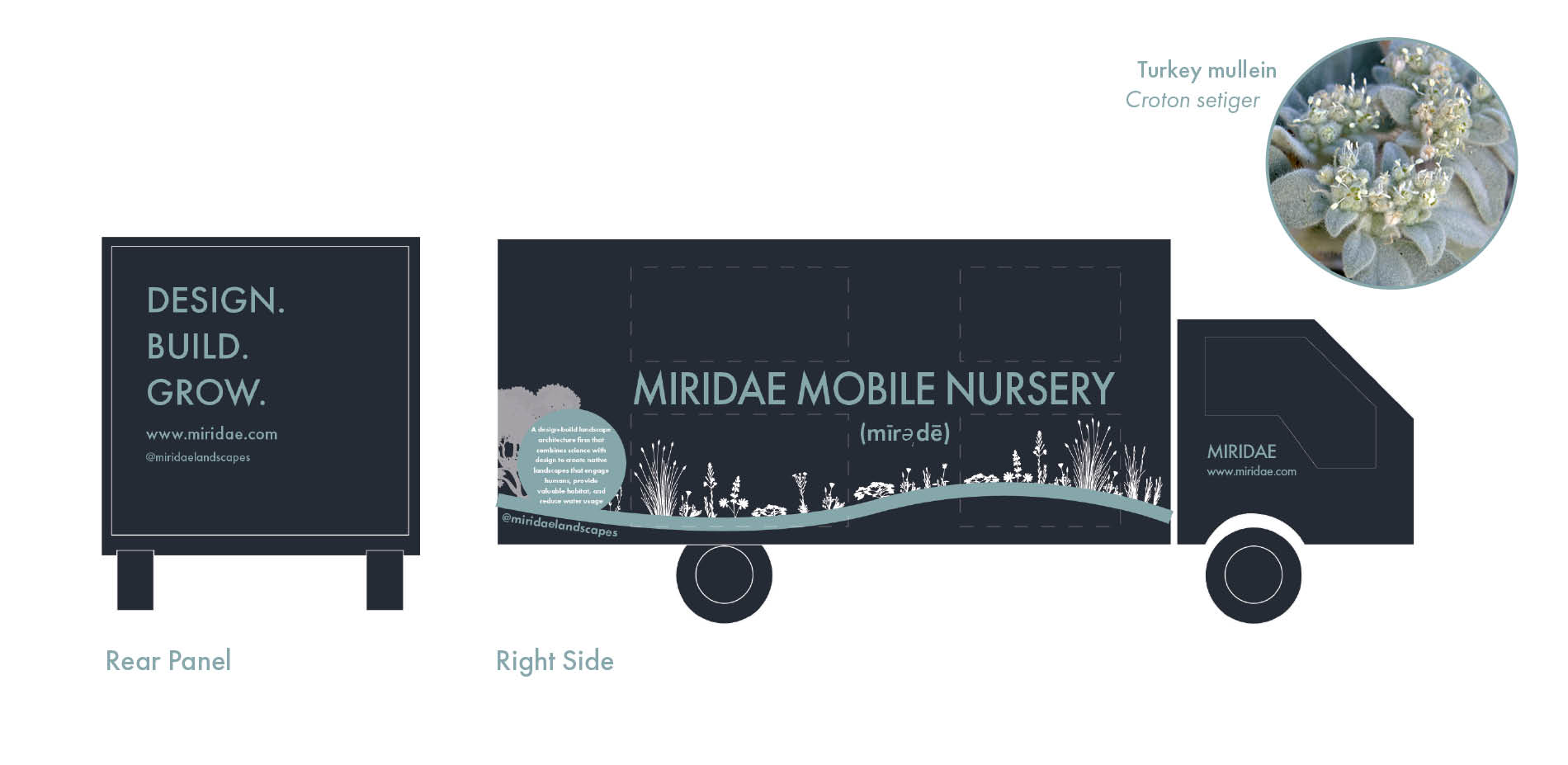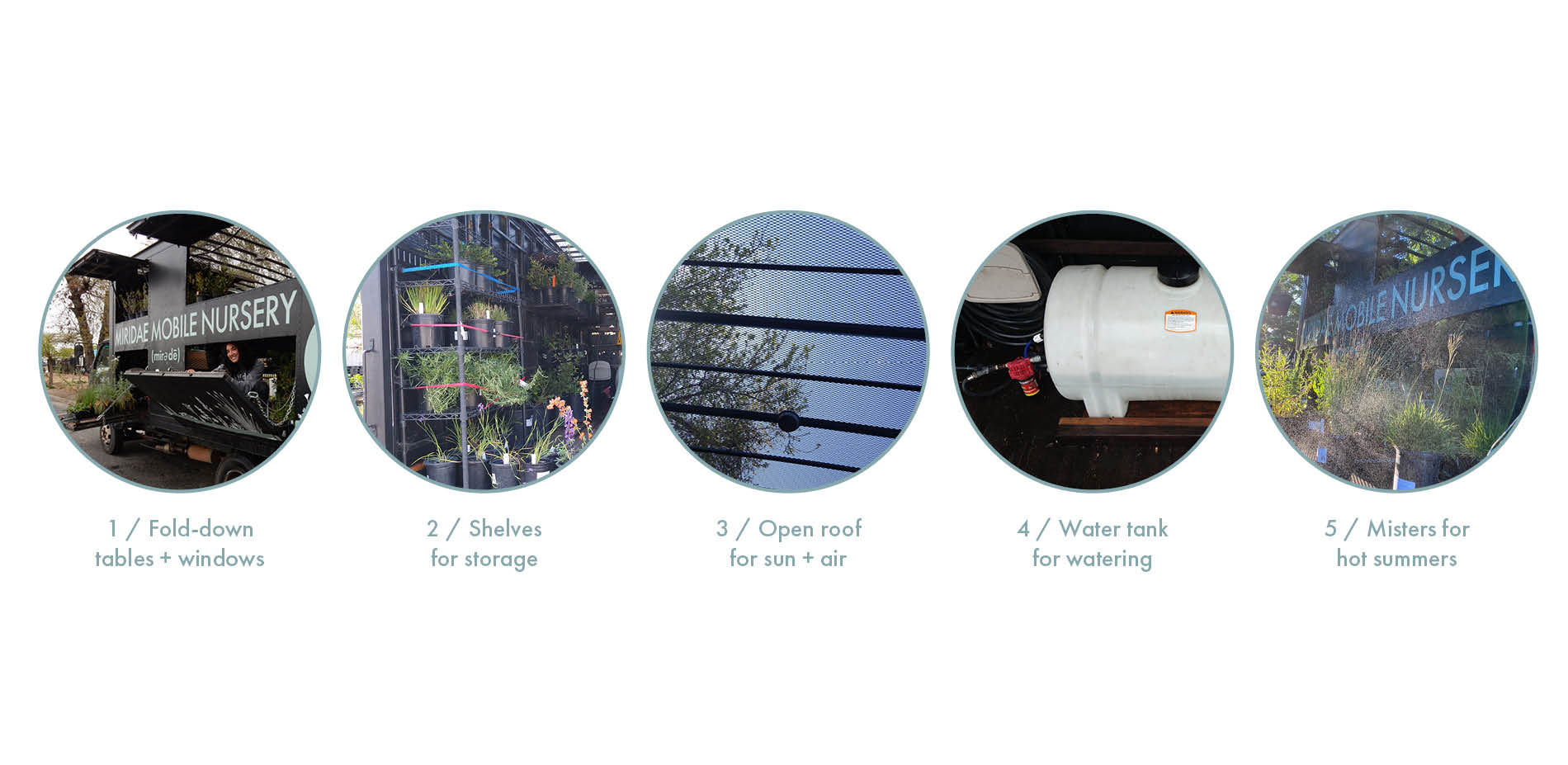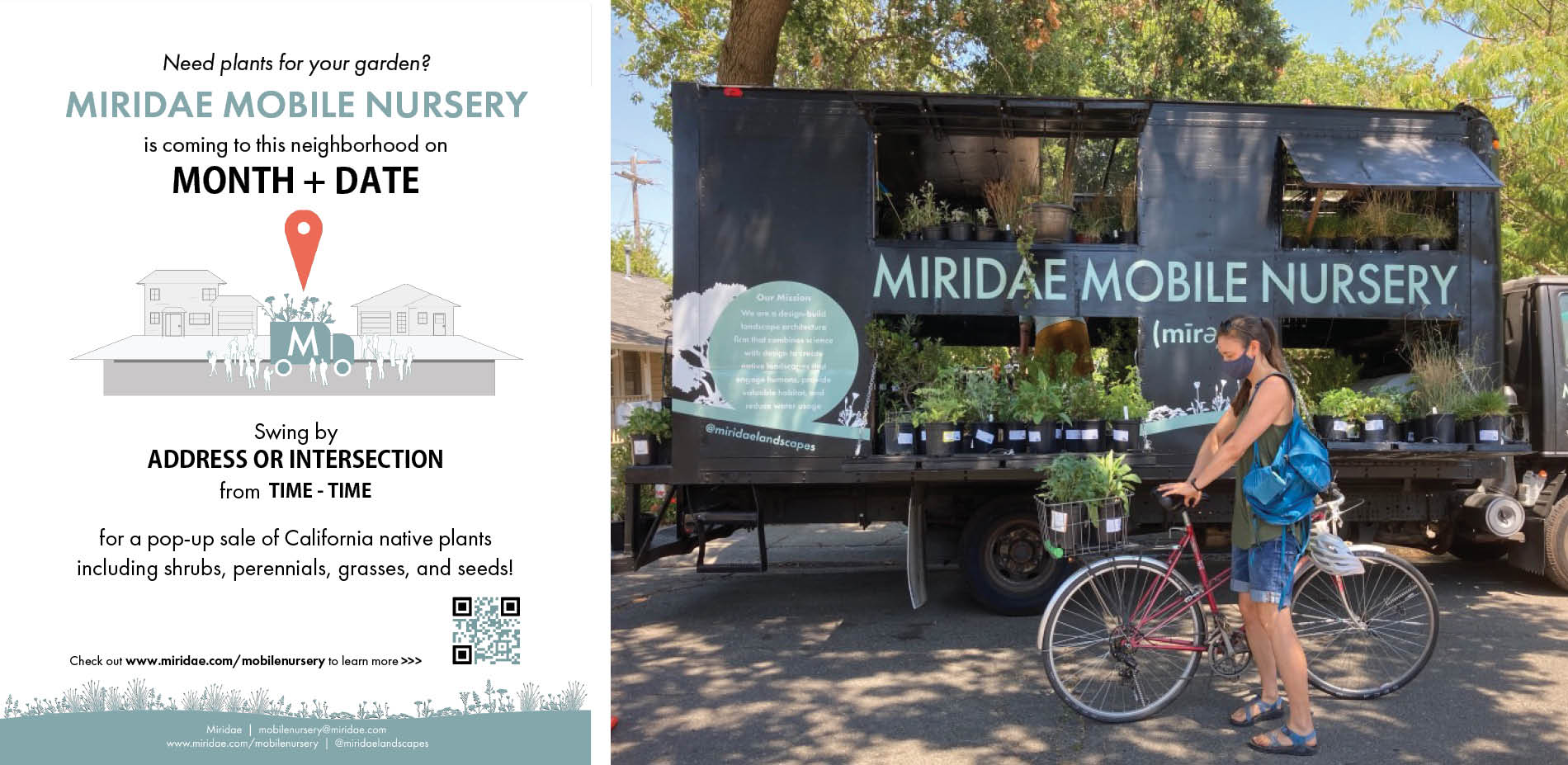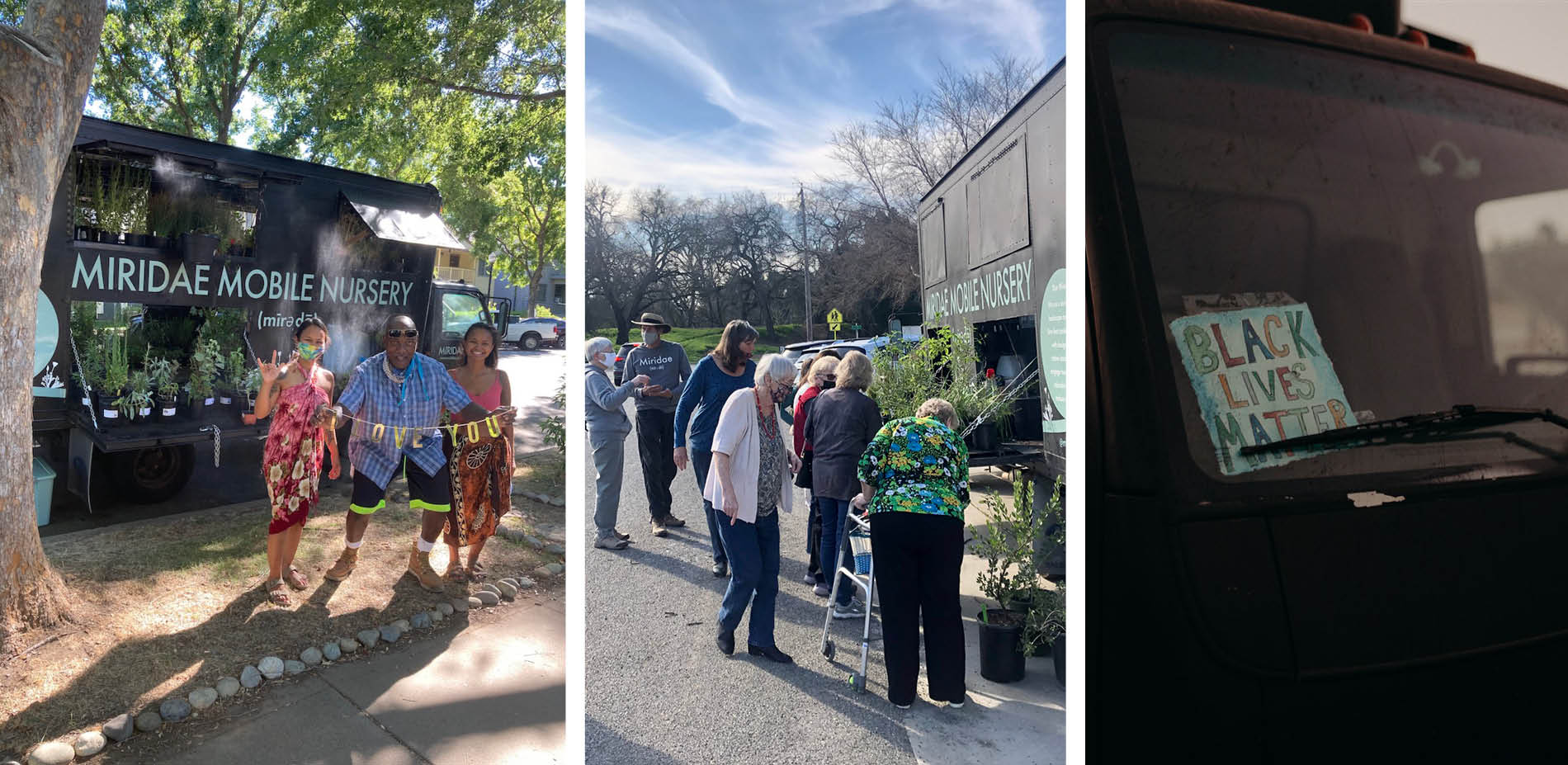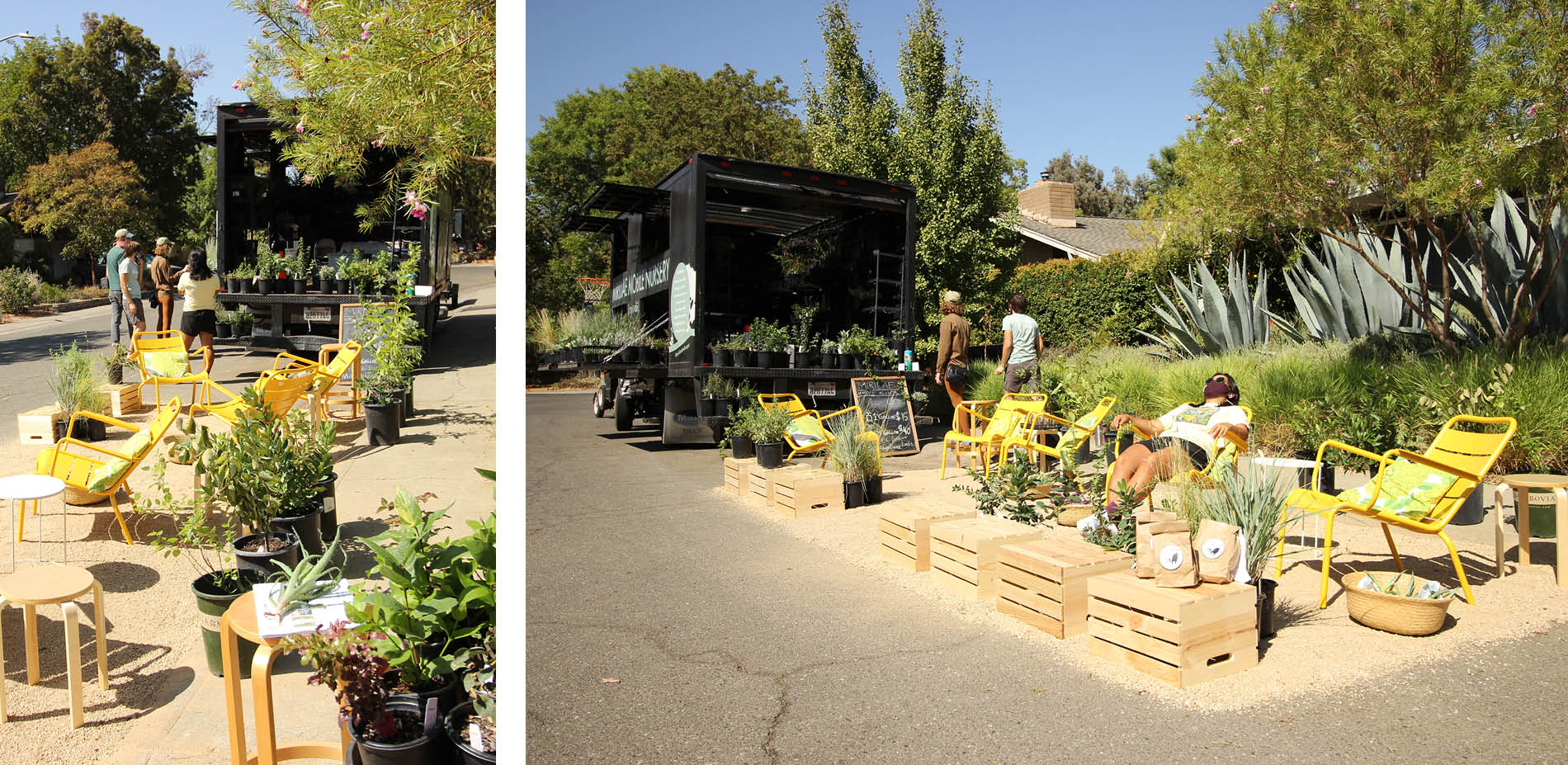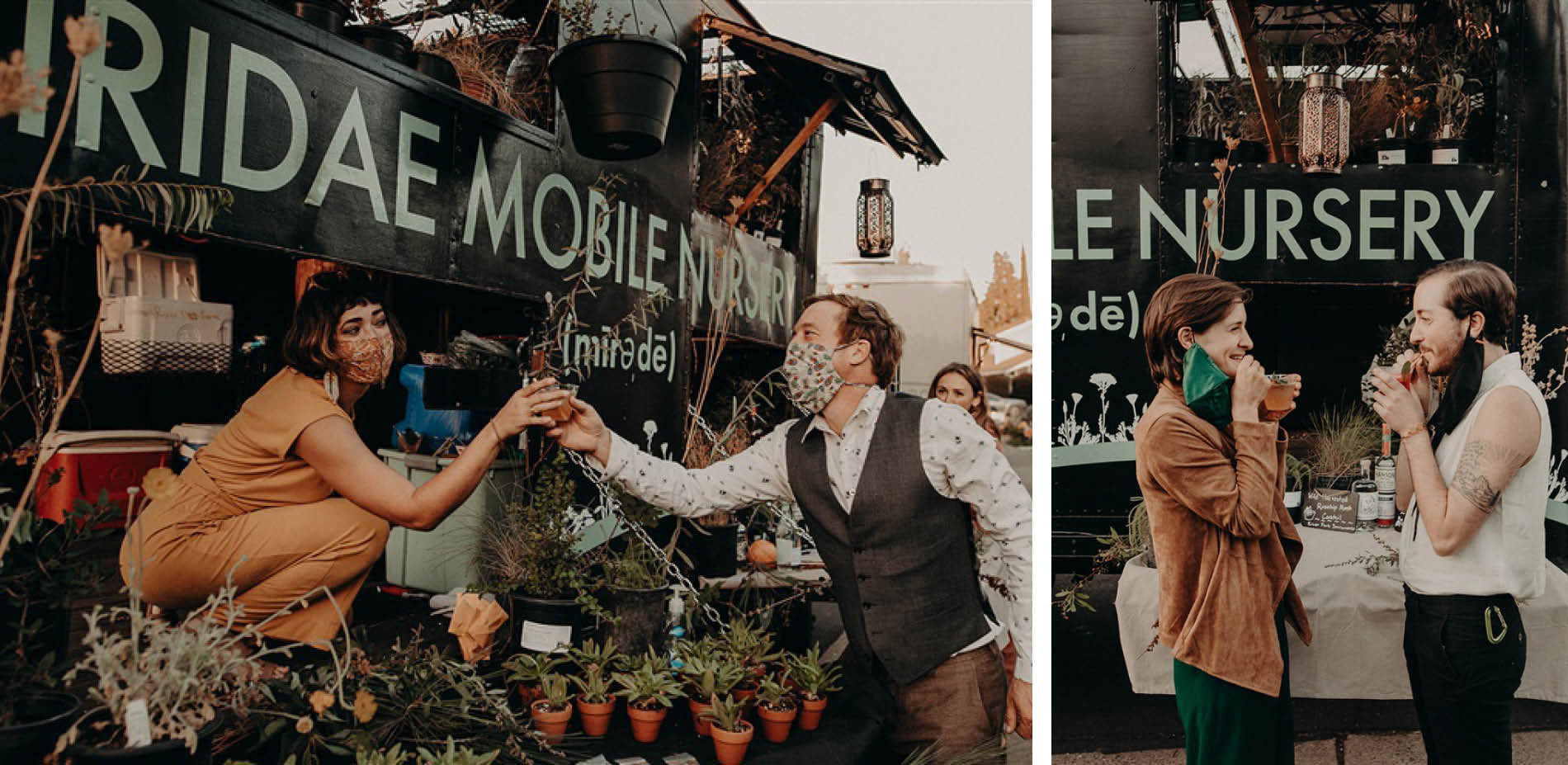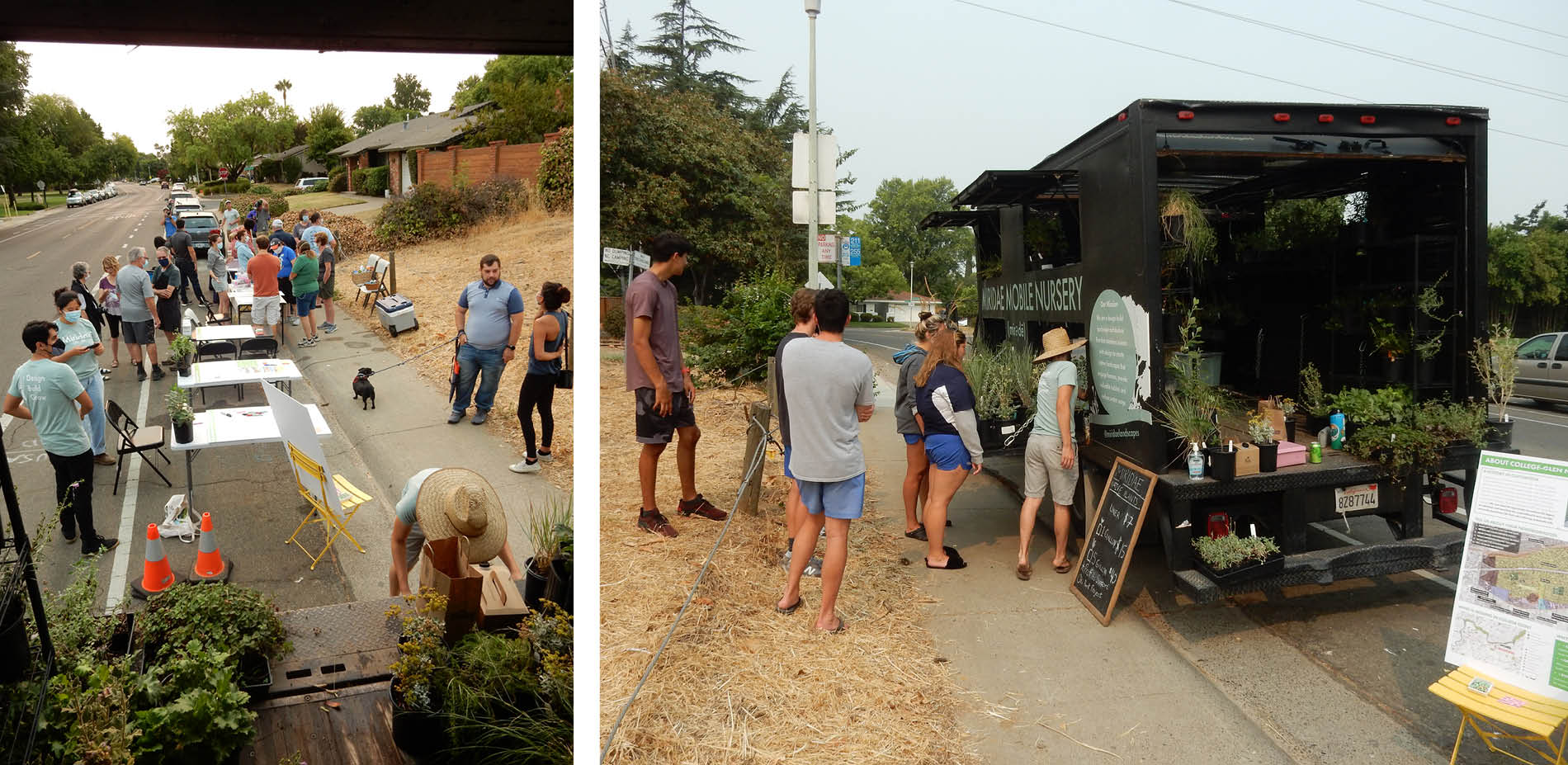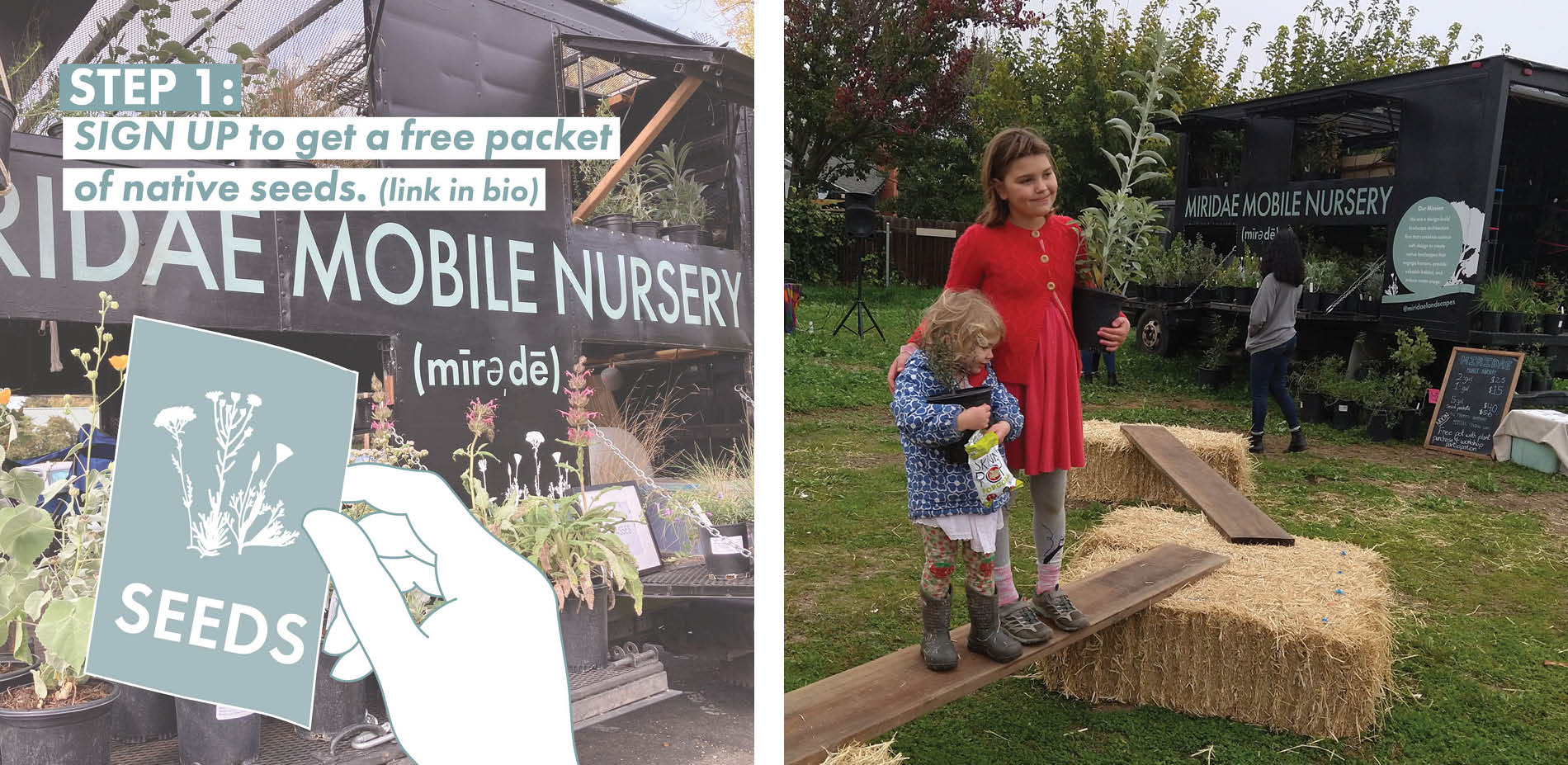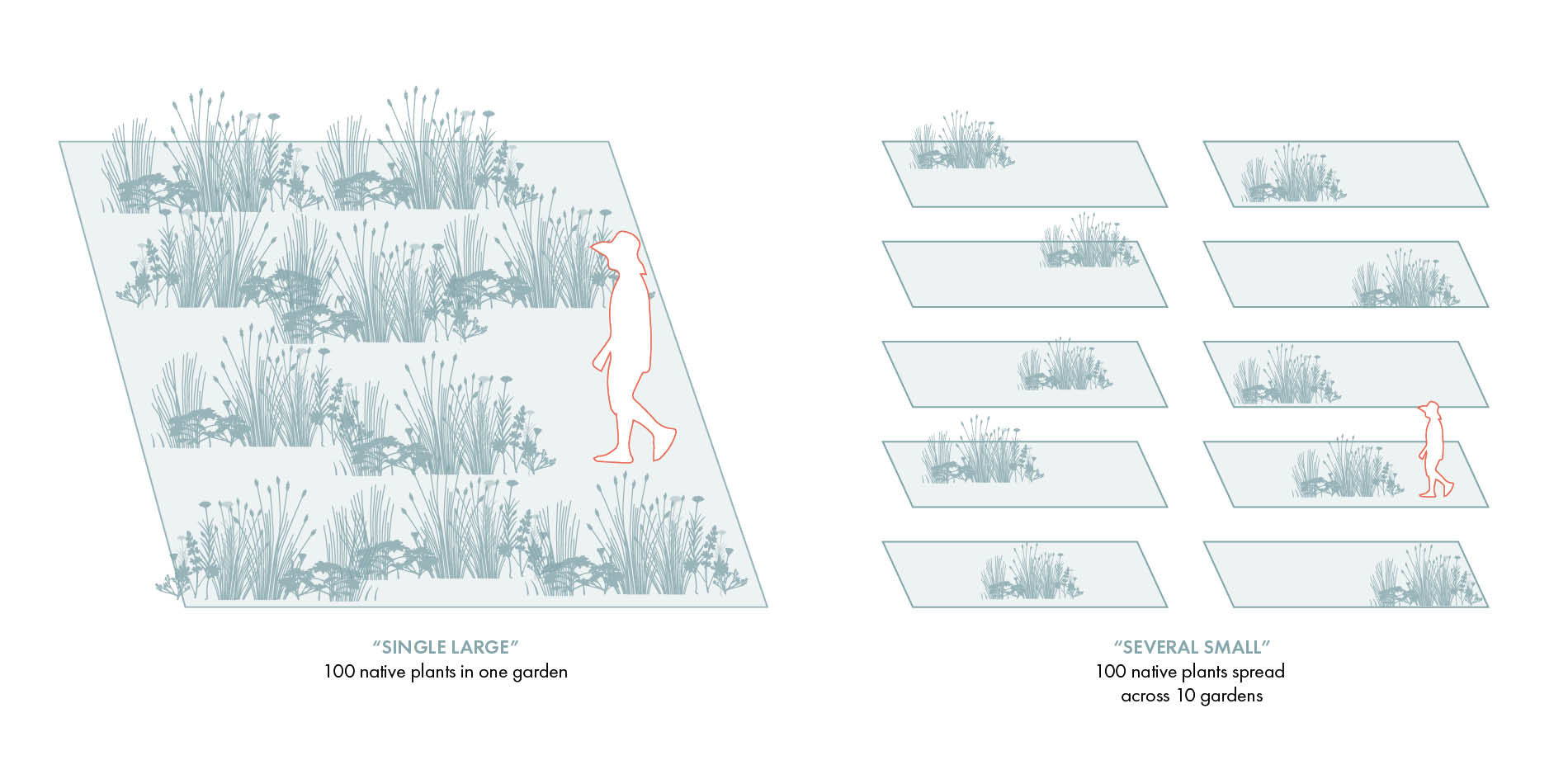Miridae Mobile Nursery: Growing a Native Plant Community
Honor Award
Communications
Sacramento, California, United States
Miridae
Residents host the truck and recruit neighbors to attend, creating a community environment and encouraging conversations with the ecologists and designers staffing the truck. The jury commended it as being “an innovative way to reach and unite diverse communities for common ecological and social purposes.”
- 2022 Awards Jury
Project Credits
Jonathan Mortimer, Composer of the "jingle"
Project Statement
The Mobile Nursery elevates California native plants and encourages them to take root by bringing plants, scientists, and landscape architects into communities. Its mission is to encourage people to plant environmentally-beneficial native plants in their gardens and communities. These urban and suburban areas are powerful opportunities to mitigate climate change, build bird and pollinator habitat, provide access to nature to a diversity of communities, and empower people to effectively incorporate native plants into their gardens. The impact begins with the individual and scales up to the neighborhood and the city, as the Mobile Nursery makes its way through the Sacramento Region.
Launched in 2020 at the height of the Covid-19 pandemic, the Mobile Nursery, a retrofitted box truck, was designed to bring people together in a safe and socially-distanced way. Residents host the truck and recruit their neighbors to attend, creating a community environment and encouraging conversations with the ecologists and designers staffing the truck. The neighborhood scale allows our team to offer custom, location-specific advice and locally-grown plant species unavailable at most retail locations.
Project Narrative
THE DESIGN: FROM TRUCK TO NURSERY
The Mobile Nursery was created to foster native landscapes at the scale of the neighborhood, to make these plants more accessible to a diverse set of people, and to communicate the importance of building this patchwork of habitat across our neighborhoods. The company’s established design and build business had long strived to support do-it-yourself gardeners and people with budgets too small for typical yard overhauls. We had long recognized them as important agents of change for our built environment. How could we help them successfully plant native plants that support wildlife local to the Sacramento area? How could we organize multiple neighbors to work together to create habitats comprising the sum of their individual gardens, even without large budgets? And how could we turn gardeners into citizen scientists, empowering them to help create data-informed best practices that could shape the future of the sustainable landscaping industry? This neighborhood scale gardening has been a crucial missing piece in the puzzle to designing wildlife habitat into human-dominated spaces.
Enter the Mobile Nursery, which was purchased in February 2020 as a graffiti-covered produce delivery box truck. We wanted the truck to be functional and interactive, and to fold out into a retail space, with tables to sell plants on, overhangs for shade, and misters for Sacramento’s hot summers. To keep the plants thriving, we needed air, sun, water, and solar energy to run the truck’s nursery operations. Working with our design and build teams, we iterated layouts for the truck’s modifications. The final design is simple and functional, with two fold-out tables and two overhangs on each side of the truck. The tables leave room for people to walk between the plants for sale and the overhangs provide shade and act as windows to showcase additional plants in the truck. Last, we added a plant and insect-inspired “jingle” - similar to that of an ice cream truck - to alert neighbors to the plant sales. The jingle is composed of natural sounds from local native wildlife, like tree crickets, gold finches, lupine seeds popping, and even monarch caterpillars chewing.
BUILDING COMMUNITY WITH NATIVE PLANTS
The Mobile Nursery officially launched in May 2020 when the world was stuck at home in quarantine, filled with anxiety around the global Covid-19 pandemic. Many people were eager to get outside, to plant and garden, but they were wary of going to big box stores. It was the right time for gardening to bring people together in their own neighborhoods, and we developed a method for the Mobile Nursery to run effectively, efficiently, and safely.
To make this a sustainable endeavor, we hired a handful of UC Davis landscape architecture and PhD ecology students and we created a Host Toolkit for residents to recruit neighbors and promote the Mobile Nursery visits. There is no fee or obligation for a minimum amount of people; goodwill and best efforts are enough. The Host Toolkit includes email, social media, and flier templates, making the promotional piece easy and effective for the neighborhood host. We have heard from multiple hosts that hosting the Mobile Nursery connected them to their communities in new ways - folks met neighbors they had never met, discovered common ground they didn’t know was there, and used plant sales as opportunities to come together safely when other options, like church, were not safe.
As the pandemic continued, we began working with restaurants and breweries to cross-promote and encourage outdoor engagement with people. We have a number of regular restaurant and brewery hosts in the Sacramento region in addition to individuals, community gardens and farmers’ markets in neighborhoods. We have been able to support some of these businesses by designating them as pick-up zones for pre-ordered plants, which draws people to pick up their plants and grab a bite or beer while there. Even though the mask and social-distancing mandates have been lifted in California, these relationships have continued.
The Mobile Nursery is booked nearly every weekend, from neighborhoods in Sacramento’s urban grid to wealthy and working class suburban areas comprising a diversity of neighborhoods, demographics, and ethnic/political orientations. People want to have safe access to plants, and many strived to bring their neighborhoods together as much as they wanted to buy plants. We have met wonderful people, many of whom are leaders in their communities.
The Mobile Nursery is also activated for more formal community engagement and design events. It acts as a magnet, drawing people to the event, and as an educational tool, explaining why certain design elements - such as California native grasslands, hedgerows, and pollinator gardens - are integral elements of the proposed design. It creates community buy-in through engagement, education, and exposure to native plants.
The students who run the Mobile Nursery are motivated about spreading the word about native plants and facilitating their use throughout the region. Since we sell plants to people in their own neighborhoods, we can provide advice on what plants to plant where, as well as tips on watering and what wildlife to watch for, custom-tailored to each location. We spread the good word on native plants to residents that previously hadn’t even considered their benefits.
NEXT STEPS: CREATING CITIZEN SCIENTISTS + RESEARCH
The Mobile Nursery has created a new set of citizen scientists and inspired a series of research questions which our landscape architecture and construction team, paired with our non-profit, are actively taking on and designing into our built work. For example, if the plants we sell set seed, do the seeds germinate within the urban/suburban environment? Where do the seeds go? And how far? These questions have led to an on-going project called, The Seed Pile Project, where we ask participants (i.e., citizen scientists) to place piles of native seeds along sidewalks in cities, suburban areas, and roadsides, map them using GPS, then monitor the locations for germination and growth of the plant. The goal is to observe, track, and collect data on which, if any, species successfully drop seed on their own, and under what environmental and management circumstances. It is a citizen science project that germinated from the Mobile Nursery, its daily operations, and conversations with neighbors. Hopefully its results will inform designers which species to plant near sidewalks and advise city planners on which species to specify along roadways and bike paths.
The Mobile Nursery has also asked us to look closer at the impact of the neighborhood scale: how does selling a few native plants to an individual compare with planting hundreds in a larger project? In other words, is 100 plants in one garden better or worse ecologically compared with 10 plants in 10 gardens? We are turning a classic research debate on SLOSS (Single Large or Several Small), a concept in ecological restoration, on its head by looking at the theory at this smaller neighborhood scale. The SLOSS debate has classically been applied to large spaces like marine reserves when considering how to optimize resource investment for conservation, rather than the small ones that our Mobile Nursery addresses, like urban gardens and neighborhoods.
The Mobile Nursery has a simple mission and business model. Its mission is to get native plants into neighborhoods and to engage people with them. Its business model is that it has to be fun and it must cover its own bills. Any profits are directed towards our company’s non-profit, which uses native insects and plants as tools for workshops and makes STEM education more accessible. The Mobile Nursery is constantly evolving and growing into research and design projects, most of which focus on this oftentimes overlooked everyday residential realm and neighborhood scale.


